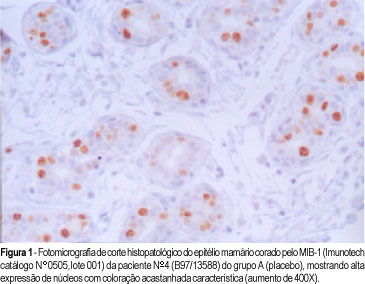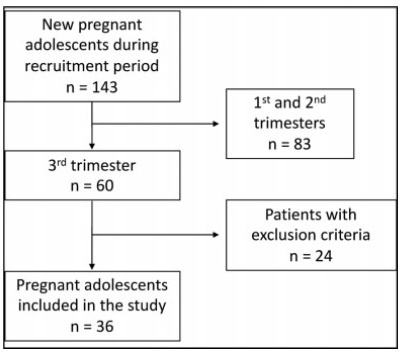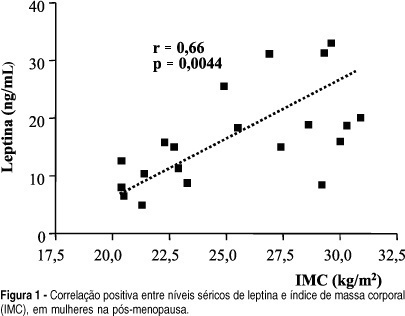Summary
Revista Brasileira de Ginecologia e Obstetrícia. 2000;22(7):429-433
DOI 10.1590/S0100-72032000000700005
Purpose: to study the monoclonal antibody MIB-1 in the normal breast epithelium adjacent to a fibroadenoma in women in the luteal phase of the menstrual cycle treated with tamoxifen. Patients and methods: the proliferative activity of the mammary epithelium adjacent to the fibroadenoma was studied by immunohistochemistry based on immunoexpression of the monoclonal antibody MIB-1. The study was randomized and double blind and was conducted on 44 women with fibroadenomas, divided into 3 groups: A (n = 16; placebo), B (n = 15; tamoxifen, 10 mg), and C (n = 13; tamoxifen, 20 mg). Tamoxifen was administered for 22 days starting on the 2nd day of the menstrual cycle and a biopsy was taken on the 23rd day. Results: the mean percentage of stained nuclei per 1000 cells was 9.2 in group A, 4.5 in group B, and 3.2 in group C. Fisher's test revealed that tamoxifen significantly reduced the immunoexpression of MIB-1 at the doses of 10 and 20 mg compared to the placebo group (p<0.0001), with no significant differences between doses in terms of proliferative activity (p = 0.21). Conclusion: we conclude that tamoxifen significantly reduced the proliferative activity of the mammary epithelium at the doses of 10 and 20 mg/day.

Summary
Revista Brasileira de Ginecologia e Obstetrícia. 2008;30(9):429-431
Summary
Revista Brasileira de Ginecologia e Obstetrícia. 2021;43(6):429-435
To evaluate serum levels of adiponectin in pregnant adolescents between 30 and 36 weeks of gestation.
A prospective cross-sectional study enrolled 67 normal pregnant women between 30 and 36 weeks of gestation and eutrophic (body mass index [BMI]: 18.5-25 kg/m2), of which 36 were adolescents (< 20 years old) and 31 adults (≥ 20 years old). Serum adiponectin levels were determined by enzyme-linked immunosorbent assay (ELISA). The t-student or Mann-Whitney tests were used for intergroup comparison.
Pregnant adolescents showed significantly higher serum adiponectin concentrations comparedwith pregnant adults (p=0.04). No differences were observed in adiponectin levels in younger pregnant adolescents (< 16 years old) compared with older pregnant adolescents (≥ 16 years old). Adiponectin values were divided into 3 subgroups:<3,000 ng/mL, between 3,000 and 5,000 ng/mL, and>5,000 ng/mL. Birthweight was significantly higher in women>5,000 ng/mL when compared with<3,000 ng/mL in the adolescent group. No association between pregestational adiponectin levels and BMI, gestational weight gain, and gestational age was observed; however, there was a positive relation with birthweight (p=0.0239).
Serum adiponectin values in pregnant adolescents between 30 and 36 weeks of gestation were higher compared with pregnant adults; however, no differences between younger and older pregnant adolescents were observed.

Summary
Revista Brasileira de Ginecologia e Obstetrícia. 2004;26(6):429-433
DOI 10.1590/S0100-72032004000600002
OBJECTIVE: to correlate serum leptin concentration with bone mineral density (BMD) in postmenopausal women. METHODS: twenty-two healthy postmenopausal women were included in the present study. BMD was measured by dual energy X-ray absorptiometry at the lumbar spine and femoral neck. Serum leptin concentrations were determined using an immunoradiometric assay. Statistical analysis was performed by ANOVA and Dunn and Pearson's correlation tests. RESULTS: mean BMD values were 0.898 ± 0.140 g/cm² at the lumbar spine and 0.760 ± 0.152 g/cm² at the femoral neck. Mean serum leptin concentration was 17.2 ± 9.4 ng/ml and no significant differences were observed among women with normal BMD, osteopenia and osteoporosis (18.6 ± 7.8, 18.9 ± 9.9 and 15.6 ± 10.6, respectively; p > 0.05). No significant correlations were observed between serum leptin levels and BMD measurements at the lumbar spine and femoral neck, when the whole sample was considered and when patients were divided into groups with osteoporosis and/or osteopenia and a control group. We observed a positive significant correlation between serum leptin levels and body mass index (BMI) (r = 0.66; p = 0.0044). CONCLUSIONS: there was no direct correlation between leptin and BMD in postmenopausal women, although we observed positive significant correlation between leptin and BMI. This fact indicates a possible indirect effect of leptin on bone metabolism.

Summary
Revista Brasileira de Ginecologia e Obstetrícia. 2011;33(1):43-48
DOI 10.1590/S0100-72032011000100007
The treatment options for pregnant patients with invasive cervical cancer (ICC) depend on gestational age, clinical stage and the patient's wishes. Some authors have reported cases of neoadjuvant chemotherapy followed by radical surgery in these patients. The aim of this paper was to revisit this subject and to add a new case and review the literature. We report the case of a 30 year-old woman in the 24th week of gestation. She was diagnosed with ICC (squamous cell carcinoma grade 2), stage IIB (International Federation of Gynecology and Obstetrics - FIGO). Nulliparous, the patient refused to interrupt the pregnancy. After meticulous counseling, the patient accepted treatment with neoadjuvant chemotherapy (cisplatin 75 mg/m² and vincristine 1 mg/m²) and subsequent evaluation of radical surgery concomitant to a cesarean section. Four complete cycles of chemotherapy were administered without delays or significant adverse effects. A few days before the date scheduled for surgery, the patient was admitted in advanced labor (37th week of gestation). Due to tumor clinical response, the obstetric team decided to monitor the labor, and the patient gave birth to a male newborn (2,450 g) uneventfully. Radical surgery was performed three days after birth, and histopathology analysis revealed carcinoma confined to the cervix without lymphatic involvement. Mother and son are in good general condition 12 months after delivery. Cisplatin-based chemotherapy during the second or third trimester of pregnancy appears to be a safe option for patients who do not wish to interrupt a pregnancy while awaiting fetal maturity. However, additional studies are needed to confirm the prognosis and assure the safety of newborns and patients.
Summary
Revista Brasileira de Ginecologia e Obstetrícia. 2018;40(1):43-46
Gestational syphilis is a prevalent disease in Brazil and other low and medium income countries. Desensitization to penicillin is recommended for pregnant women with syphilis who are allergic to β-lactams. This is a descriptive study utilizing outpatient medical records from 2011 to 2015 from a mother and child hospital that is part of the national healthcare system in the South of Brazil, which performs an average of 3,600 birth assistances per year. All cases of pregnant women with syphilis and presumptive diagnosis of β-lactam allergy during the study period were included. The patients referred for desensitization originated from the hospital prenatal care service, as well as from municipal/state antenatal care services. Oral desensitization was performed in the obstetric emergency room, and adult and pediatric intensive care units were available at all times. Ten patients underwent desensitization during the period of study. Personal history of urticaria was the most common reaction that demanded desensitization. All patients tolerated the procedure well, and showed no adverse reactions.We report a successful program of oral desensitization. None of the patients presented adverse reactions or complications, a fact that corroborates the feasibility and safety of the desensitization protocol. Oral administration of penicillin comes at a low cost, and optimizes the use of time and resources.
Summary
Revista Brasileira de Ginecologia e Obstetrícia. 2023;45(1):43-48
Physical and emotional burdens during the journey of infertile people through assisted reproductive technologies are sufficient to justify the efforts in developing patient-friendly treatment strategies. Thus, shorter duration of ovarian stimulation protocols and the need for less injections may improve adherence, prevent mistakes, and reduce financial costs. Therefore, the sustained follicle-stimulating action of corifollitropin alfa may be the most differentiating pharmacokinetic characteristic among available gonadotropins. In this paper, we gather the evidence on its use, aiming to provide the information needed for considering it as a first choice when a patient-friendly strategy is desired.
Summary
Revista Brasileira de Ginecologia e Obstetrícia. 2000;22(1):43-48
DOI 10.1590/S0100-72032000000100008
Purpose: to analyze the prevalence of genuine urinary incontinence (GUI) recurrence, after at least two years of follow-up, in different surgical techniques used for its correction. Patients and Methods: fifty-five patients with diagnosis of GUI, submitted to surgery for its repair at the Serviço de Ginecologia e Obstetrícia do Hospital de Clínicas de Porto Alegre from 1992 to 1996 and whose post-surgical follow-up was superior to 2 years were divided into three groups according to the surgical approach: Kelly-Kennedy (n = 24), Burch (n = 23) and Marshall-Marchetti-Krantz (n = 8). Results: there were no differences regarding recurrence rate, age at surgery and at recurrence time, estrogen therapy, number of pregnancies and vaginal delivery (p>0.05). Although posterior perineoplasty was more prevalent in the Kelly-Kennedy group, it did not influence the recurrence rate. The group submitted to the Burch approach had more years of menopause at the time of surgery. Conclusion: the recurrence rates of urinary incontinence comparing the three different techniques (Kelly-Kennedy, Burch and Marshall-Marchetti-Krantz) were, respectively, 29.2, 39.1 and 50%, which did not differ statistically. Considering the potential confusional bias for urinary stress incontinence, they did not differ among the groups. Nevertheless, we noticed that all women who had previous surgery presented recurrence of incontinence.